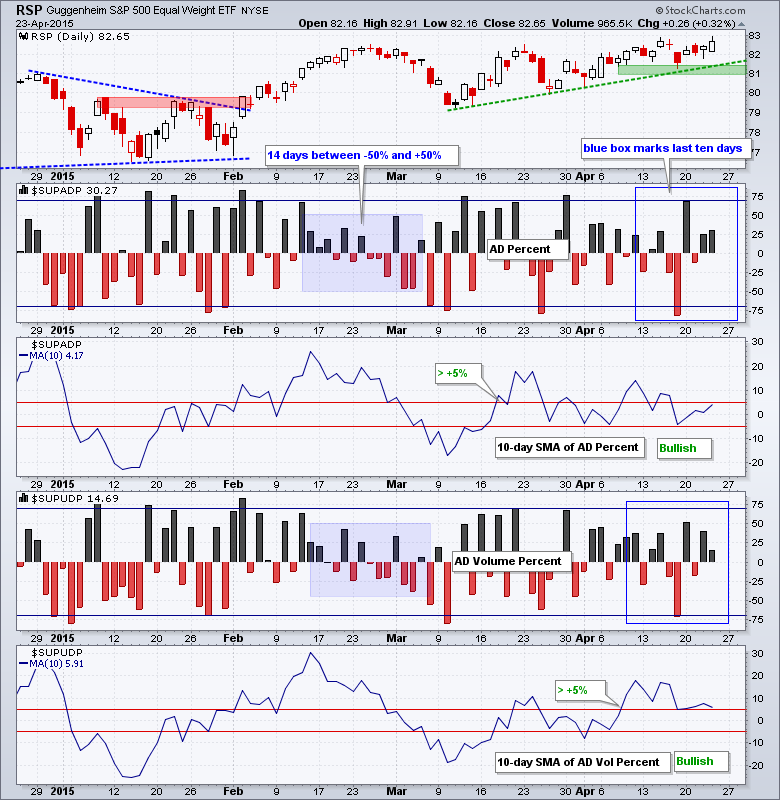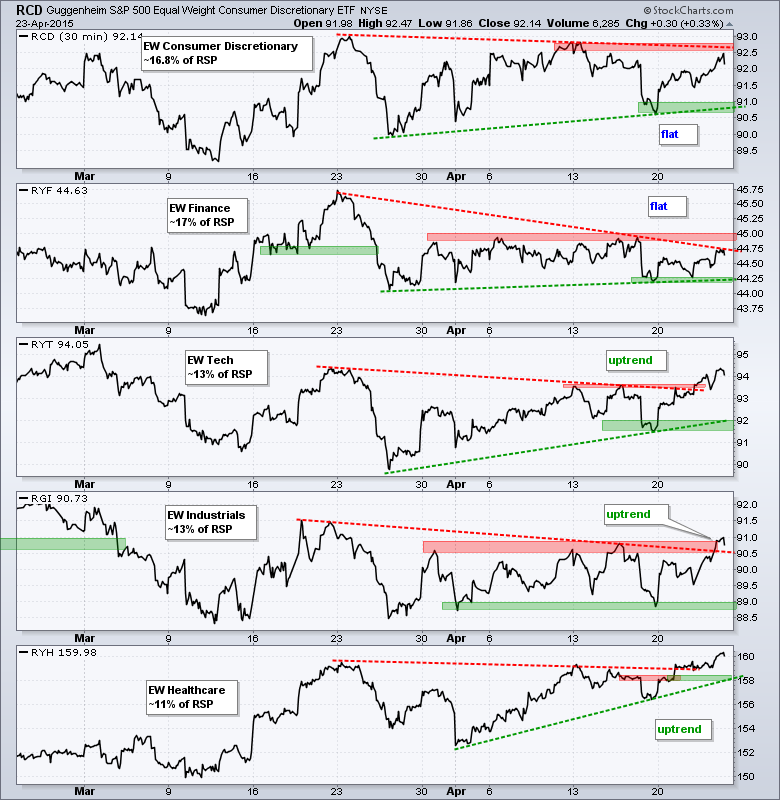Stocks put in another modest performance with the major index ETFs gaining less than a half percent. Well, the S&P SmallCap iShares (IJR) did gain .60% to lead, but this was the exception. The sectors were mostly higher with energy and technology leading the way. The Home Construction iShares (ITB) got hammered with a 2.84% decline and is seriously underperforming in April. Despite strength in the technology sector, semis were hit hard as Texas Instruments fell sharply.
**This chart analysis is for educational purposes only, and should not
be construed as a recommendation to buy, sell or sell-short said securities**
Short-term Overview (Friday, 24-April-2015):
- Short-term breadth indicators remain bullish.
- The sectors are slightly bullish with three trending up and two flat.
- SPY and QQQ hit new highs and I raised short-term support levels.
- IWM has yet to confirm with a new high, but remains in a short-term uptrend.
- TLT broke consolidation support to reverse its uptrend.
- UUP broke below the triangle trend line and extended its two-week slide.
- USO remains in a short-term uptrend, but very overbought.
- GLD broke consolidation support and is now in a short-term downtrend.
The Equal-Weight S&P 500 ETF (RSP) edged higher on Thursday and hit a new high intraday. On a low to high basis, the ETF moved from 80 to 83 in four weeks (+3.75%). It is a choppy slog, but it is a clear short-term uptrend. Breadth was not inspiring as AD Percent finished at +30% and AD Volume Percent finished at +15%. Nevertheless, it was more positive than negative and the 10-day SMAs remain in bull mode.
The short-term trends for the five big sectors remain mixed with three up and two flat. The Equal-Weight Consumer Discretionary ETF (RCD) surged towards the mid April high, but remains in a trading range the last four weeks. The Equal-weight Finance ETF (RYF) got a feeble bounce and is also range bound. I think this is the weakest of the five sector ETFs. The Equal-weight Technology ETF (RYT), Equal-weight Industrials ETF (RGI) and Equal-weight Healthcare ETF (RYH) broke above their mid April highs and are in uptrends.
**************************************************************

**************************************************************
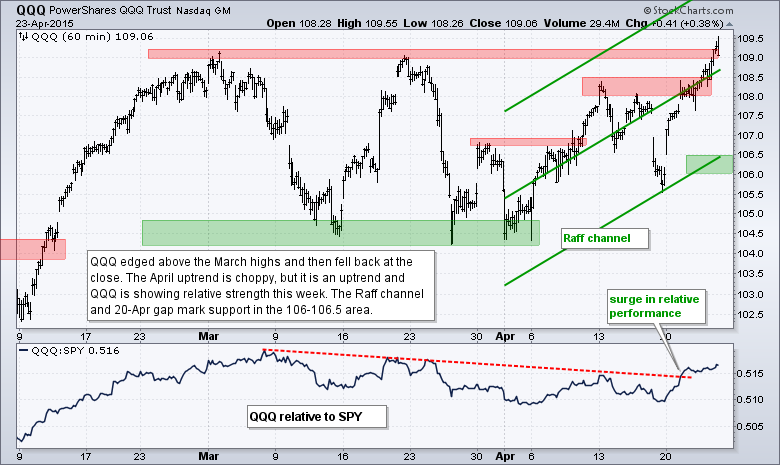
**************************************************************
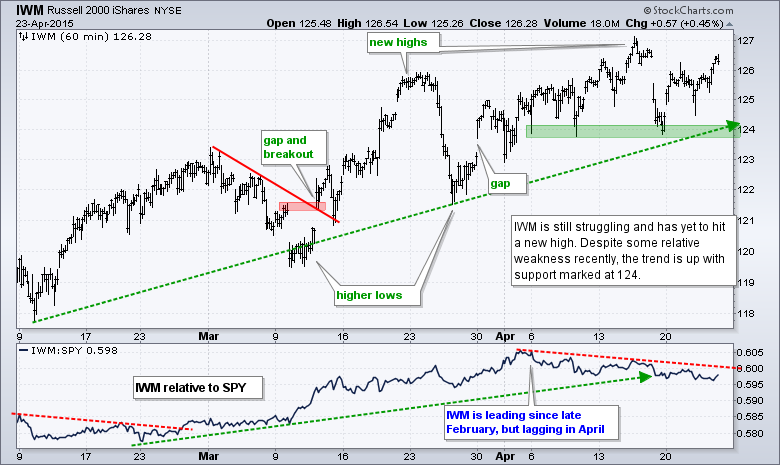
**************************************************************
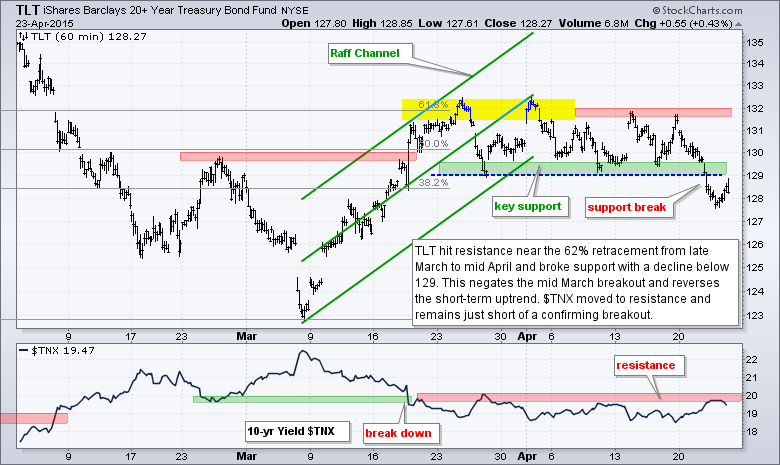
**************************************************************
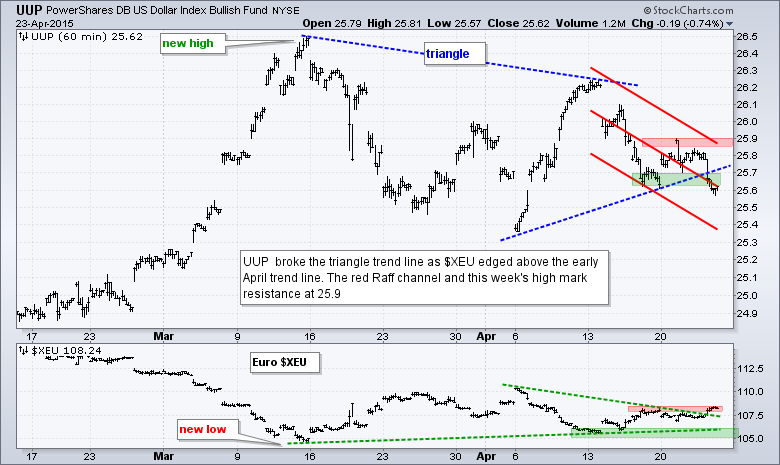
**************************************************************

**************************************************************

***************************************************************
Key Reports and Events (all times Eastern):
Fri - Apr 24 - 08:30 - Durable Goods Orders
Tue - Apr 28 - 09:00 - Case-Shiller Housing Index
Tue - Apr 28 - 10:00 - Consumer Confidence
Wed - Apr 29 - 07:00 - MBA Mortgage Purchase Index
Wed - Apr 29 - 10:00 - Pending Home Sales
Wed - Apr 29 - 10:30 - Oil Inventories
Wed - Apr 29 - 14:00 - FOMC Rate Decision
Thu - Apr 30 - 08:30 - Initial Jobless Claims
Thu - Apr 30 - 08:30 - PCE Prices
Thu - Apr 30 - 08:30 - Personal Income & Personal Spending
Thu - Apr 30 - 09:45 - Chicago PMI
Thu - Apr 30 - 10:30 - Natural Gas Inventories
Fri - May 01 - 08:15 - ADP Employment Report
Fri - May 01 - 10:00 - Construction Spending
Fri - May 01 - 10:00 - ISM Manufacturing Index
Fri - May 01 - 10:00 - Michigan Sentiment
Fri - May 01 - 17:00 - Auto-Truck Sales
This commentary is designed to stimulate thinking. This analysis is not a recommendation to buy, sell, hold or sell short any security (stock ETF or otherwise). We all need to think for ourselves when it comes to trading our own accounts. First, it is the only way to really learn. Second, we are the only ones responsible for our decisions. Think of these charts as food for further analysis. Before making a trade, it is important to have a plan. Plan the trade and trade the plan. Among other things, this includes setting a trigger level, a target area and a stop-loss level. It is also important to plan for three possible price movements: advance, decline or sideways. Have a plan for all three scenarios BEFORE making the trade. Consider possible holding times. And finally, look at overall market conditions and sector/industry performance.

